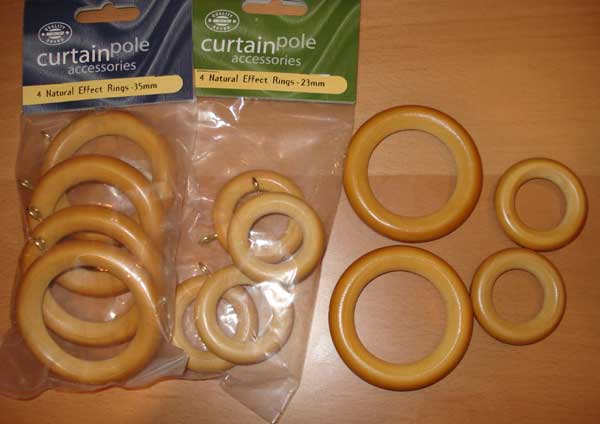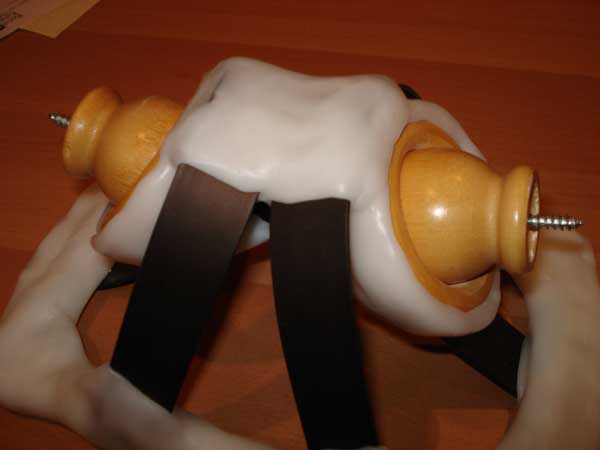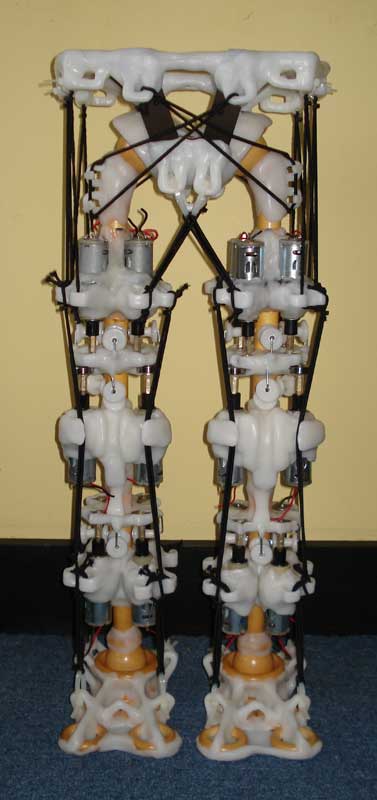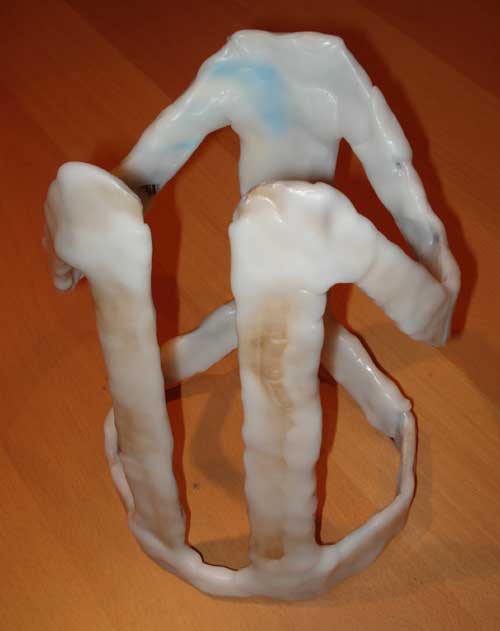android 10
Android 10 Polymorph / Shapelock project:
I wanted to build a new android that was a bit more biologically inspired and had more degrees of freedom than the other previous androids with their twin hinged parallelogram style legs. I also took a lot of influence from TheRobotStudio as you will see through the construction pictures.
The main materials used for this android include Polymorph (called Shapelock in the US). This is a plastic which melts at around 60 degrees C / 140 degrees F so that you can melt it in hot water and mash it about with your hands. It sets again when it cools and is probably as tough as nylon.

I’m also using a number of other household items – mainly curtain poles, curtain rings and door knobs, to build various parts of the robot. Polymorph sticks to wood very well so this will mean I can make a solid structure that doesn’t twist and turn:


I constructed the pelvis part for the android first. This is made from aluminium strip material to make a frame which was then covered in polymorph. I used two different sized curtain rings to make ball sockets for the legs to plug into. The legs will have curtain rail ends attached to them which fit perfectly into the ball sockets, after a little sanding, to make sure they move around ok:




The legs ‘bones’ are made from the actual curtain rail (you can buy two ball-ends, the rail and some rings in a cheap curtain rail set). The balls are attached at an angle – rather like human hips. Therefore the legs will point downwards despite the sockets being at angle:


I will be using motors from cheap cordless screwdrivers for this project as I need around 20 for the legs alone. There will be two motors per DOF – like opposing muscles in a human:

The hips will have four motors each for the two DOF, and knees will be just a simple hinge joint with a further two motors each:



The ankles will have another ball and socket joint with another four motors there for the two DOF each. The feet are made from more curtain rings and of course lots of polymorph:

Each motor will have it’s shaft extended with a 50mm screwdriver bit for the string it pulls to wrap around. These strings will pull against the hip / foot, or lower leg like muscles which is how it will work. The screwdriver shaft is mounted in a bearing at the other end to prevent sideways forces from upsetting the gearbox:


I’ve added some extra bits on top of the feet to stop them flexing too much – there will be more to come when I add the loops for all the strings to attach to:

Here it is so far standing up. Only another 12 motors to add:

My girlfriend says it looks like a bird(?):

So I went shopping:

Here are the ankles with their motors added:

In order that the motors pull a string towards the top and bottom of the leg section, it is required for it to turn 90 degrees around a pulley. I made some pulleys out of plastic tube and polymorph:

Each motor will have a pulley mounted close to it:


The additional knee motors have been added along with their pulleys. I’ve also started to add loops everywhere for strings and bungee cord to be attached:


Here are the lower legs and feet – I’ve added more loops to the feet as anchor points:

The ankles are held in position with black bungee cord, here it is with the upper legs balanced on top:

I’ve added loops to the pelvis too, everything is strung together with bungee cord so it can stand by itself. I may add more bungee cord as the weight of the android increases when its torso and arms / head are added, for now it seems ok – basically it will stay where you put it. It is currently around 26” / 65cm tall:




17th March ’07
I’ve started to build the Torso this week, it will have a part-flexible spine up to what is essentially the rib cage. Each section of the spine will use a curtain ring and a door knob to make ball and socket joints all the way up:

One part is attached to the pelvis:

I added some small arms onto the spine parts so that I can string them up with bungee cord:

They now sit on top of the pelvis and they’re all sprung straight:

The ‘rib cage’ will hold most of the electronics and also support the arms and head. I made a frame out of cardboard so that I had something to work from as large structures are hard to make from Polymorph in one go:

Adding more Polymorph:

And more, you can still see some of the cardboard through it:

I’ve added a curtain ring socket at the bottom so it will fit on top of the spinal cord, a door knob at the top for the head/continuation of the neck to sit on, and two curtain ring arm sockets along with some extra ‘should pad’ type sections which will enable the arm motors/strings to pull against something in order to lift the arms:

Here it is sitting on top of the rest, it’s quite well balanced as there’s nothing else holding it here. I have a couple of motors to add to the front for the equivalent of human abdomen muscles. I also need to decide what size and shape the electronics will be that fit inside so I can think about how they will be mounted:

So What’s next…?




